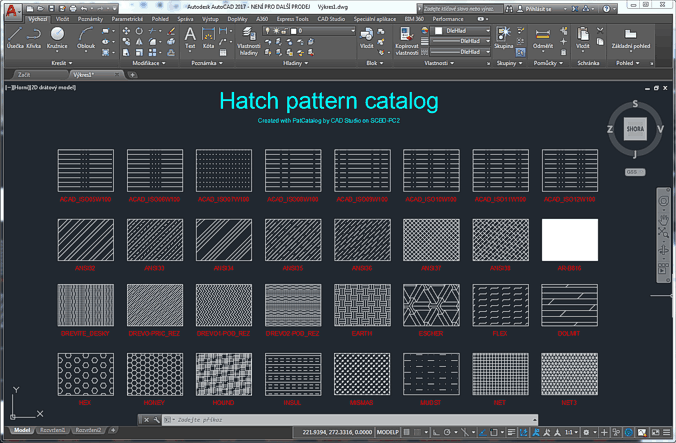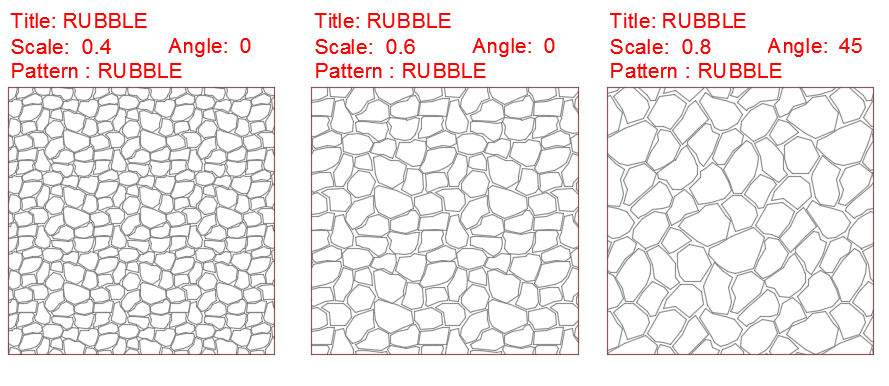
The contents of your hatch pattern definition will appear in the command line.Select all the lines and nodes, but not the box.You are now prompted to select the entities inside the box that define your hatch pattern.A note appears reminding you that your lines must correspond to the limit and snap settings mentioned in step 7.

You must work within the square shown and leave the snap settings as they are: A dialog pops up informing you that you can draw points and lines to define the hatch pattern.Load the new lisp file (see this article for details).Set your current linetype to continuous.Instructions to follow in MicroSurvey CAD or other IntelliCAD based product:.

You will need to use either inCAD or MicroSurvey CAD to create hatch patterns. *NOTE: embeddedCAD does not allow the use of lisp routines.
#Cad hatch patterns download
Visit the CADalyst website to download their Hatchmaker.lsp routine: The process of defining the hatch patterns can be tedious, but an open source lisp routine is available that makes the hatch pattern definition a simple process. The formatting of the pattern definition is described briefly in this article from AutoCAD:

The hatch pattern definitions are mostly coordinates, see below for how the ANSI134 pattern is defined: NOTE: Hatch pattern definition files can be exchanged between IntelliCAD and Autodesk products. If you need to create your own hatch patterns, you can modify the hatch pattern definition file icad.pat in a text editor by copying it from its normal location, making changes, and replacing it:Ĭ:\Program Files\MicroSurvey\MSCAD****\patterns\icad.patĬ:\Program Files\MicroSurvey\embeddedCAD ****\UserDataCache\en-us\Support\MSEmbed.patĬ:\Program Files\Autodesk\AutoCAD ****\UserDataCache\en-us\Support\ACAD.pat IntelliCAD and AutoCAD (the CAD engine used as the basis for embeddedCAD and inCAD) are delivered with a range of Predefined hatch patterns that you can access when you open the Boundary Hatch Dialog: Posted by James Johnston on 09 February 2022 12:20 PM


 0 kommentar(er)
0 kommentar(er)
